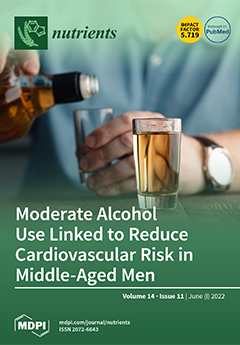Previous evidence suggests a potential dual impact of aging and vitamin B6 (B6) deficiency on polyunsaturated fatty acid (PUFA) metabolism; gender may influence PUFA biosynthesis. Perturbation of PUFA compositions during B6 deficiency could be linked to age-related health outcomes. However, little is known about the interrelationships between vitamin B6, PUFA, and gender in the older population. Therefore, we investigated whether gender-specific associations of B6 intake and plasma pyridoxal 5’-phosphate (PLP) concentration, respectively, with plasma PUFA concentrations and ratios (eicosapentaenoic acid (EPA), docosahexaenoic acid (DHA), arachidonic acid (AA), EPA + DHA, EPA/AA, and (EPA + DHA)/AA) existed in older adults. We further examined the relationships of adequate B6 status (PLP ≥ 20 nmol/L) with high (above median) plasma PUFA relative to deficient B6 status. This cross-sectional study analyzed 461 participants aged ≥60 years from NHANES 2003–2004. Nutrient intakes were assessed using two 24-h recalls and supplement questionnaires. PLP and PUFA concentrations were measured. Multivariate linear regression assessed the association of B6 intake and PLP with PUFA; multivariate logistic regression evaluated the relationship of adequate B6 status with high plasma PUFA, adjusting for demographic, socioeconomic, and dietary factors; physical activity; smoking; alcohol; medication; and BMI. There were interactions between gender and B6 intake on EPA (
P-interaction = 0.008) and AA (
P-interaction = 0.004) only, whereas no interaction existed between gender and PLP on PUFA. PLP was directly associated with EPA (β = 0.181,
P = 0.002), DHA (β = 0.109,
P = 0.005), EPA + DHA (β = 0.14,
P = 0.002), EPA/AA (β = 0.186,
P = 0.004), and (EPA + DHA)/AA (β = 0.13,
P = 0.026). The odds of having high plasma EPA (adjusted (a) OR: 2.03,
P = 0.049) and EPA/AA (aOR: 3.83,
P < 0.0001) were greater in those with adequate B6 status compared to those with deficient B6 status. In conclusion, in US older adults, a higher PLP level was associated with a greater level of EPA, DHA, EPA + DHA, EPA/AA, and (EPA + DHA)/AA. Adequate B6 status was associated with high EPA and EPA/AA status. These findings suggest that sufficient vitamin B6 status may positively influence PUFA metabolism in older adults.
Full article






